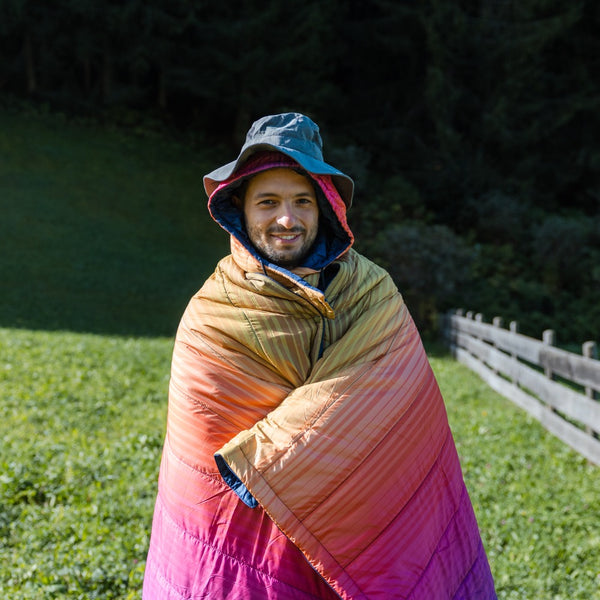Spring offers a perfect opportunity for camping, but busy schedules may limit daytime outings. However, the night presents its own adventure with hiking under the stars. Night hiking adds an element of mystery to familiar trails, creating lasting memories. While hiking in the dark brings new challenges and safety considerations, proper preparation ensures a safe and enjoyable experience. With the right knowledge and readiness, night hikes become thrilling and unforgettable outdoor adventures.
Why Hiking at Night ?
The Only Own Time for Parents
For many parents, finding time for outdoor activities can be challenging amidst busy schedules and family commitments. Night hiking provides a unique opportunity to escape the hustle and bustle of daily life and reconnect with nature. With children tucked in bed and the world quieting down, parents can embark on a nighttime excursion to rejuvenate their spirits and enjoy some much-needed solitude.
Daylight May Not Be the Best Hiking Time
While daytime hikes have their allure, with picturesque views and vibrant scenery, they also come with drawbacks such as crowded trails and scorching temperatures. Night hiking offers a refreshing alternative, with cooler weather and fewer crowds. Additionally, the tranquility of the nighttime landscape creates a serene atmosphere conducive to introspection and contemplation.
A New Perspective
Night hiking offers a fresh outlook on familiar trails. With limited visibility, hikers rely more on senses like hearing and touch, heightening their awareness of the environment. Sounds, often overlooked during the day, become more distinct, from rustling leaves to chirping crickets. This shift in focus deepens the connection with nature, enhancing the overall experience. Moreover, the absence of daylight reveals a breathtaking night sky, showcasing stars, constellations, and celestial wonders.
Encounters with Nocturnal Wildlife
Nighttime hiking presents an opportunity to encounter elusive nocturnal creatures. Animals rarely seen in daylight emerge under the cover of darkness, adding excitement to the hike. From silent owls gliding through trees to playful possums crossing paths, the wilderness teems with nocturnal activity. These encounters provide a glimpse into the hidden world of nighttime wildlife, enriching the adventure and adding a sense of wonder to the experience.
Hiking at Night Is Not Only for Experienced People
Contrary to popular belief, night hiking is not exclusively reserved for seasoned outdoor enthusiasts. Novices can also enjoy the unique experience of exploring trails under the cover of darkness, provided they take necessary precautions and start with well-marked routes. By gradually building confidence and familiarity with nighttime hiking, beginners can expand their outdoor skills and broaden their horizons.
Is It Really Dangerous To Hike At Night?

Choose Your Time
Selecting the right time for a night hike is crucial for ensuring a safe and enjoyable experience. Opt for nights with clear skies and minimal precipitation to maximize visibility and minimize the risk of inclement weather. A full moon can also enhance visibility, casting a soft glow over the landscape and illuminating the trail ahead.
Choose Your Routine
Sticking to familiar trails is recommended for night hiking, especially for those new to the activity. Familiarity with the terrain and landmarks can help prevent getting lost or disoriented in the dark. Before embarking on a nighttime adventure, review trail maps, familiarize yourself with the route, and inform someone of your itinerary.
Choose Your Friends (Do Not Night Hike Alone)
Safety in numbers is a cardinal rule of night hiking. Always hike with a companion or group, as there is safety and reassurance in having others by your side. The more people you have around you, the more equipment you can use in an emergency situation. In the event of an emergency or unexpected situation, having someone to rely on can make all the difference. Additionally, inform a trusted friend or family member of your hiking plans and expected return time.
Choose Your Equipment (Familiar Equipment)
Using reliable gear suited for nighttime use is essential for a successful night hike. Invest in a quality headlamp or flashlight with sufficient brightness and battery life to illuminate the trail effectively. Familiarize yourself with your equipment before hitting the trail to ensure seamless operation when navigating in the dark.
Keep Warm
Nighttime temperatures can drop significantly, especially in mountainous or desert environments. Staying warm is essential for comfort and safety during a night hike. Consider wearing layers of moisture-wicking clothing to regulate body temperature and prevent overheating or hypothermia. Additionally, pack a portable heated blanket or insulated sleeping pad to provide extra warmth during rest breaks or overnight stays.
Choose Your Speed
When hiking at night, it's essential to maintain a steady and deliberate pace to navigate terrain safely and efficiently. Take your time to observe your surroundings and adjust your speed according to trail conditions and visibility. Avoid rushing or pushing beyond your comfort zone, as this can increase the risk of accidents or injuries.
Don’t Try New Trails (or Get Out of the Set Trail)
While it may be tempting to explore new trails under the cover of darkness, it's best to stick to familiar routes when night hiking. Venturing off-trail increases the risk of getting lost or disoriented, especially in low-light conditions. Instead, save unfamiliar trails for daytime excursions when visibility is optimal and navigation is easier. By staying on familiar paths, you can enjoy the benefits of night hiking while minimizing the risk of getting lost or encountering unforeseen obstacles.
Brace the Darkness (But Still Take Light)
While it's crucial to have a dependable headlamp and spare batteries for night hikes, illuminating the trail isn't always necessary. Surprisingly, even without a full or partial moonlight, visibility can be quite good on a clear night. It takes about 30-45 minutes for your eyes to adjust to darkness, and once they do, any light can disrupt this adjustment. As you become more comfortable on the trail, try practicing without lights to enhance your night vision and heighten your senses, adding excitement to the experience.
However, if you're new to night hiking or short on time, it's wise to ensure you have enough lighting for safety and visibility to spot tripping hazards along the way.


1 comment
Thanks for infos